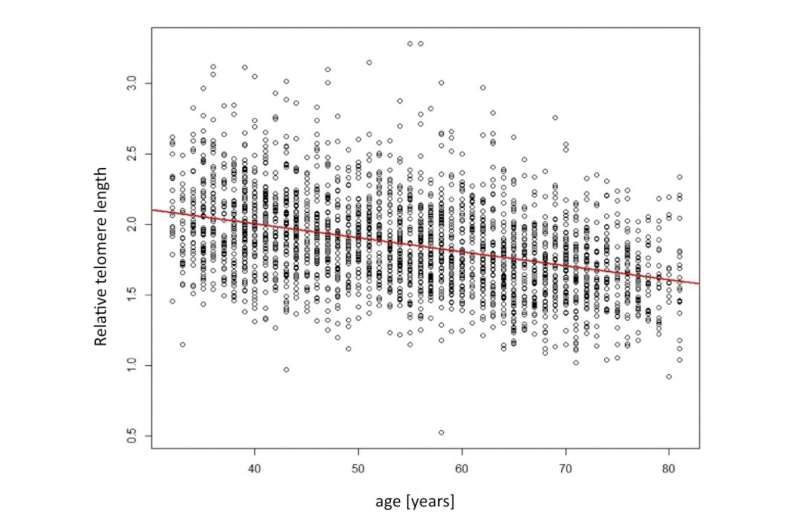
Aging is accompanied by telomere shortening. Increased telomere shortening is considered a marker of premature aging. Cardiac aging results in the development of cardiac pathologies.
Electrocardiogram (ECG) measures reflect cardiac excitation, conduction, and repolarization. ECG measures also prolong with aging and are associated with cardiac pathologies including atrial fibrillation. As premature prolongation of ECG measures is observed, researchers hypothesized that such prolongation may be associated with telomere length.
“We studied the large, community-based KORA F4 Study. Of 3,080 participants enrolled between 2006 and 2007 with detailed information on demographic, anthropometric, clinical, and ECG characteristics, 2,575 presented with available data on leukocyte telomere length,” says a recent report published in Aging.
Telomere length was determined by real-time quantitative PCR and expressed relative to a single copy gene. The researchers fitted multivariable adjusted linear regression models to associate the ECG measures RR-interval, PR-interval, QRS-duration, and heart rate corrected QTc with telomere length.
In this cohort, the mean age was 54.9±12.9 years and 46.6% were men. Increased age was associated with shorter telomere length (p < 0.01), and men had shorter telomere length than women (p < 0.05). In unadjusted models, heart rate (p = 0.023), PR-interval (p < 0.01), and QTc-interval (p < 0.01) were significantly associated with shorter telomere length. However, no significant associations remained after accounting for age, sex, and covariates.
The researchers found that ECG measures are age-dependent, but not associated with shortened telomere length as a marker of biological aging. Further research is warranted to clarify if shortened telomeres are associated with clinical cardiac pathologies including atrial fibrillation.
Source: Read Full Article
